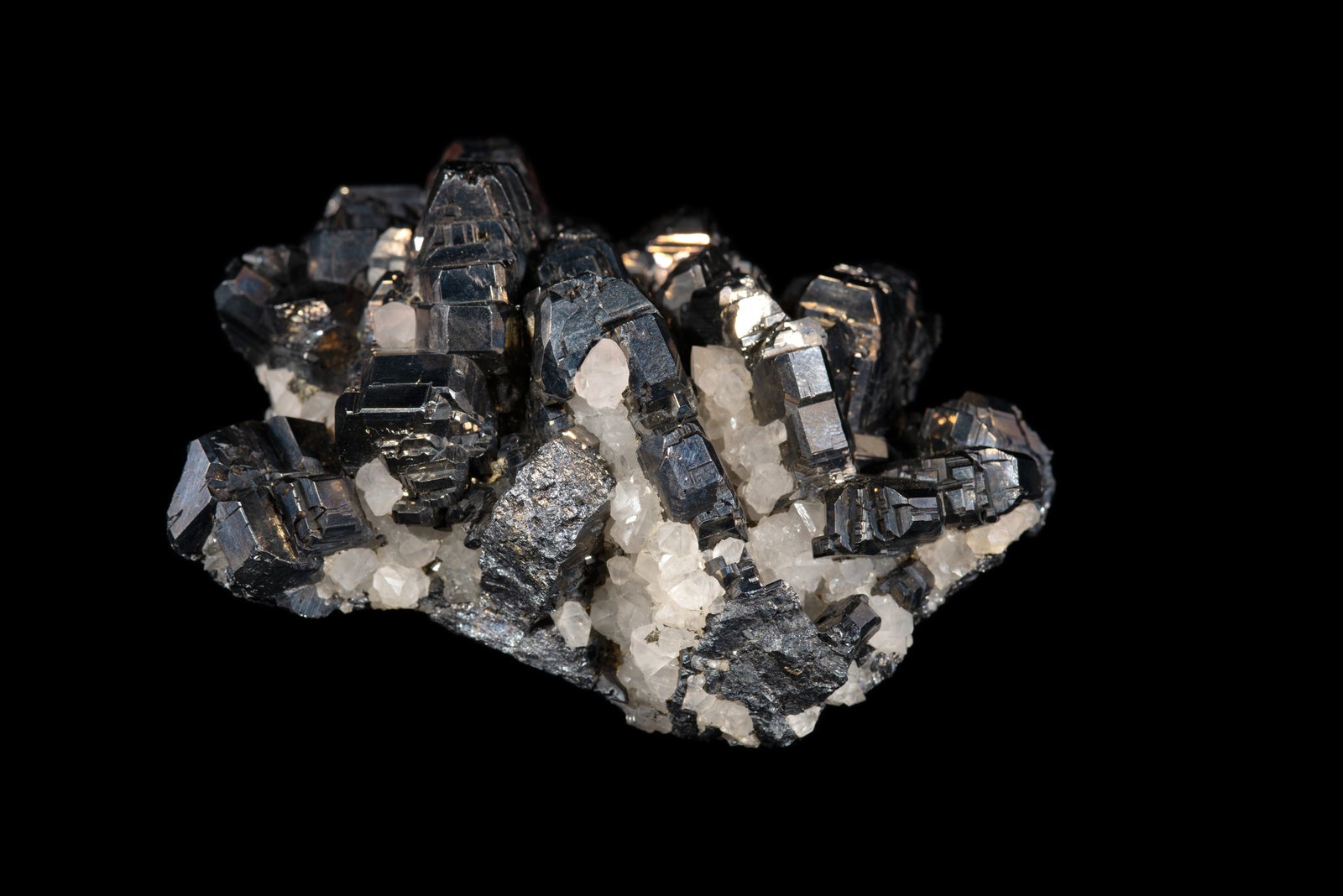
Bournonite, often called the "Cogwheel Ore," is a fascinating mineral that captures the interest of geologists and collectors alike. This unique mineral, composed of lead, copper, and antimony sulfide, forms strikingly beautiful crystals that resemble tiny gears. Bournonite was first discovered in 1805 by the French mineralogist Jacques Louis de Bournon, after whom it is named. Found in various locations worldwide, including the United States, England, and Bolivia, this mineral is not only admired for its aesthetic appeal but also valued for its industrial applications. Whether you're a seasoned mineral enthusiast or just curious about the natural world, Bournonite offers a glimpse into the intricate beauty and complexity of Earth's geological treasures.
Key Takeaways:
- Bournonite, also known as "cogwheel ore," is a fascinating mineral with a metallic luster and unique crystal formations. It has historical significance and is found in various parts of the world, making it a valuable specimen for collectors and researchers.
- Bournonite's softness, metallic luster, and historical significance make it a sought-after mineral for collectors and researchers. Its unique crystal formations and geographical distribution add to its value and intrigue.
What is Bournonite?
Bournonite is a fascinating mineral with a rich history and unique properties. Known for its striking appearance and complex chemical composition, it has intrigued scientists and collectors alike.
- Bournonite is a sulfosalt mineral composed of lead, copper, and antimony sulfide.
- It was first discovered in 1805 by the French mineralogist Jacques Louis de Bournon.
- The mineral's chemical formula is PbCuSbS3.
- Bournonite often forms in hydrothermal veins, where hot, mineral-rich water flows through cracks in rocks.
- It is commonly found in association with other minerals like galena, sphalerite, and pyrite.
Physical Properties of Bournonite
Bournonite's physical characteristics make it a standout among minerals. Its metallic luster and unique crystal formations are particularly noteworthy.
- Bournonite typically exhibits a metallic luster, giving it a shiny, reflective surface.
- The mineral is usually dark gray to black in color.
- It has a Mohs hardness of 2.5 to 3, making it relatively soft compared to other minerals.
- Bournonite crystals often form in a tabular or prismatic shape.
- The mineral has a specific gravity of 5.8 to 5.9, indicating it is quite dense.
Historical Significance of Bournonite
Bournonite has played a role in various historical contexts, from its discovery to its use in different cultures.
- Jacques Louis de Bournon, after whom the mineral is named, was a prominent figure in early mineralogy.
- Bournonite was initially identified in the Saint-Pons region of France.
- The mineral has been used as a minor ore of lead and copper in some regions.
- In the 19th century, bournonite was a popular specimen among European mineral collectors.
- Historical mining sites for bournonite include locations in France, England, and Germany.
Geographical Distribution of Bournonite
Bournonite can be found in various parts of the world, each location offering unique specimens.
- Significant deposits of bournonite are found in Cornwall, England.
- The Herodsfoot Mine in Cornwall is particularly famous for its bournonite specimens.
- In the United States, bournonite has been found in Colorado and Idaho.
- The mineral is also present in Bolivia, Peru, and Mexico.
- Chinese mines, especially those in the Hunan Province, have produced notable bournonite crystals.
Uses and Applications of Bournonite
While not widely used in industry, bournonite has some specific applications and is highly valued by collectors.
- Bournonite is primarily collected for its aesthetic and scientific value.
- It is occasionally used as a minor source of lead and copper.
- The mineral's unique crystal formations make it a popular choice for educational displays.
- Bournonite specimens are often featured in museums and private collections.
- It is sometimes used in geological research to study hydrothermal vein systems.
Interesting Facts About Bournonite
Bournonite has some intriguing aspects that make it a subject of interest beyond its basic properties.
- Bournonite is also known as "cogwheel ore" due to its distinctive crystal formations that resemble gears.
- The mineral can exhibit twinning, where two crystals grow together in a symmetrical manner.
- Bournonite's metallic luster can tarnish over time, developing a duller appearance.
- It is often found in combination with other sulfosalt minerals, creating striking mineralogical specimens.
- The mineral's name is sometimes misspelled as "bournonite" instead of "bournonite."
Collecting and Caring for Bournonite
For those interested in collecting bournonite, there are some important considerations to keep in mind.
- Bournonite specimens should be handled with care due to their relative softness.
- It is best to store bournonite in a dry environment to prevent tarnishing.
- Cleaning bournonite should be done gently, using a soft brush and mild detergent.
- Collectors often seek out bournonite specimens with well-formed crystals and minimal damage.
- High-quality bournonite specimens can fetch significant prices in the mineral market.
Scientific Research on Bournonite
Bournonite continues to be a subject of scientific study, offering insights into various geological processes.
- Researchers study bournonite to understand the formation of hydrothermal veins.
- The mineral's crystal structure has been analyzed using X-ray diffraction techniques.
- Bournonite's chemical composition provides clues about the conditions under which it formed.
- Studies of bournonite can help identify potential mining sites for lead and copper.
- Ongoing research aims to uncover new applications for bournonite in materials science.
The Final Word on Bournonite
Bournonite, often called "cogwheel ore," is a fascinating mineral with a unique appearance and intriguing properties. Found in various locations worldwide, this mineral is a lead, copper, and antimony sulfide. Its metallic luster and intricate crystal formations make it a favorite among collectors and geologists alike.
Beyond its visual appeal, bournonite has practical uses in the mining industry, primarily for extracting lead and copper. Its presence can indicate valuable ore deposits, making it an essential mineral for economic geology.
In summary, bournonite's combination of beauty and utility makes it a standout in the mineral world. Whether you're a seasoned collector or just curious about geology, this mineral offers something for everyone. Keep an eye out for its distinctive cogwheel pattern next time you explore mineral collections or geological sites.
Frequently Asked Questions
Was this page helpful?
Our commitment to delivering trustworthy and engaging content is at the heart of what we do. Each fact on our site is contributed by real users like you, bringing a wealth of diverse insights and information. To ensure the highest standards of accuracy and reliability, our dedicated editors meticulously review each submission. This process guarantees that the facts we share are not only fascinating but also credible. Trust in our commitment to quality and authenticity as you explore and learn with us.


